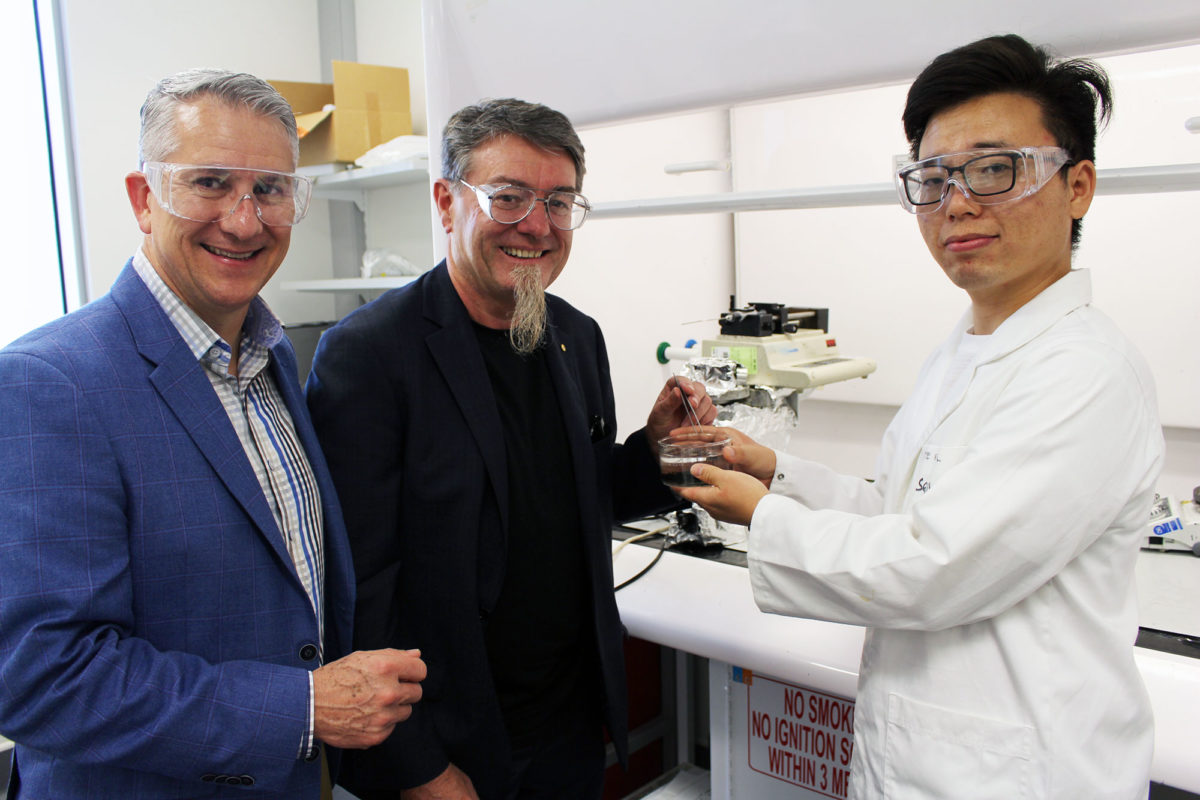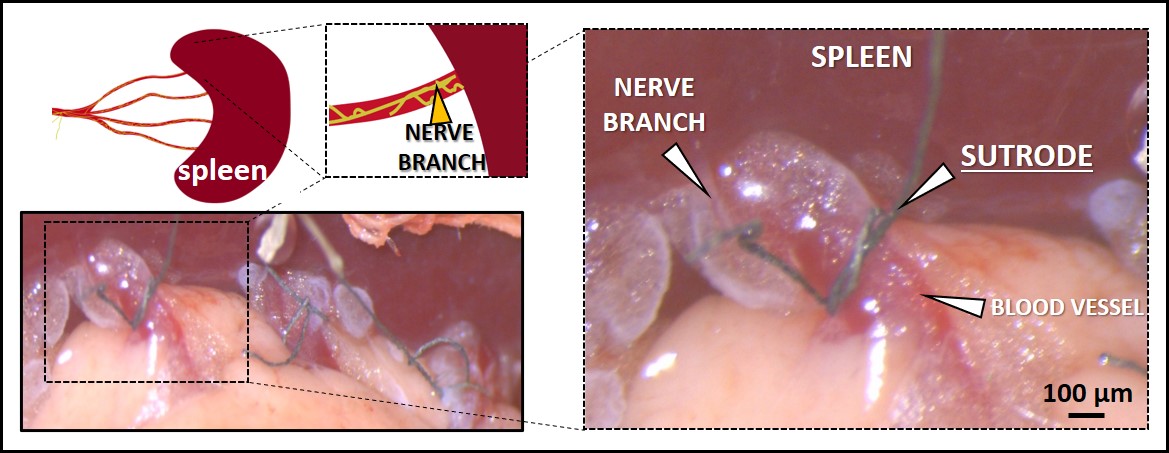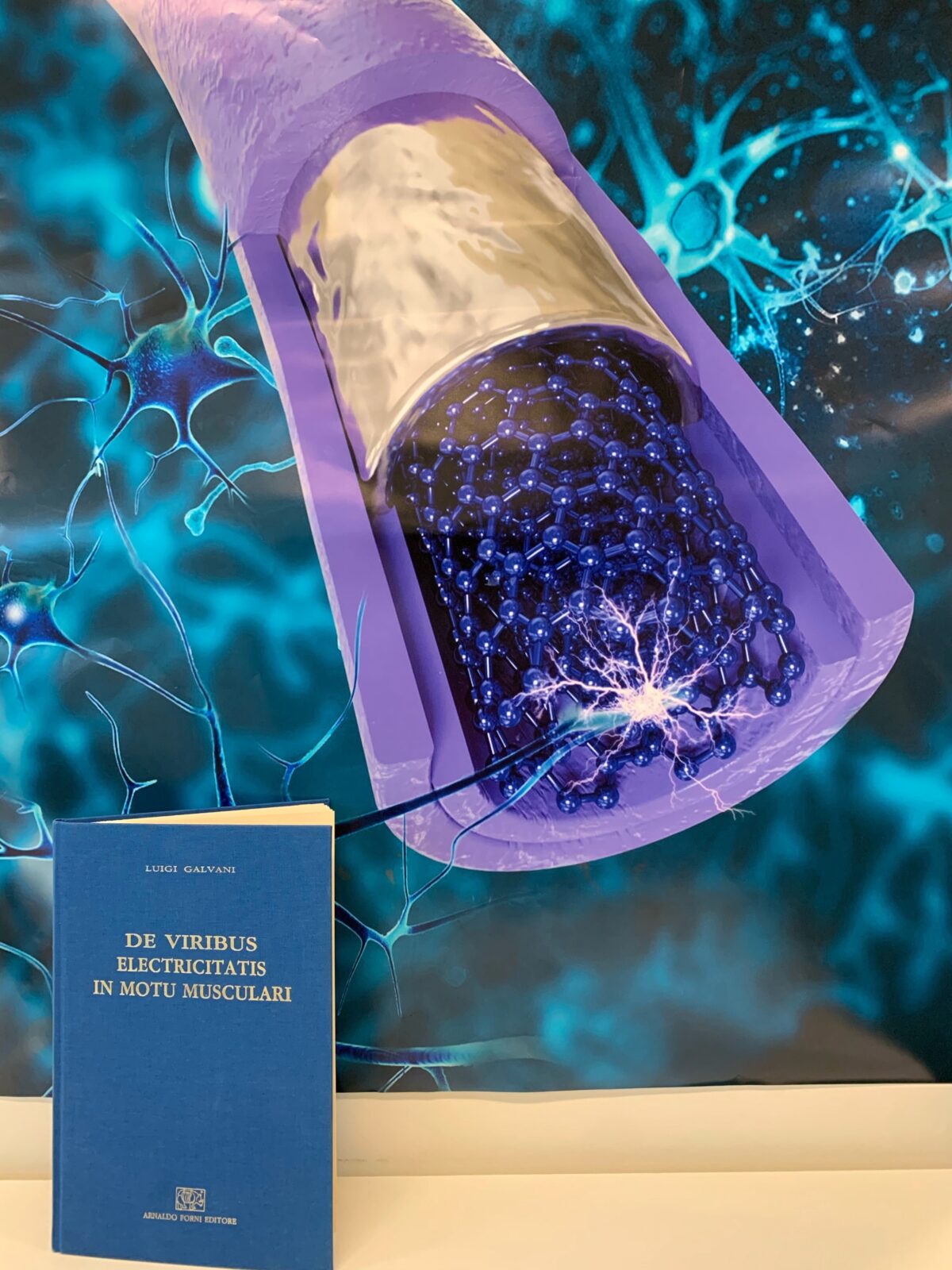News
3D printing bone tissue
Jun 28 2022
ACES and University of Wollongong (UOW) researchers have joined forces for another collaboration with the University of Houston, building on the ground-breaking sutrode research for a new electroceuticals paper published in bioRxiv.

Prof Mario Romero-Ortega, Prof Gordon Wallace and Kezhong Wang (from left to right).
The article explains how the use of electroceuticals will revolutionise the way in which we treat disease, replacing traditional pharmaceutical treatments with electrical stimulation of appropriate organs. The efficiency of such electrical stimulation has been taken to a new level with the advent of a sutrodable electrode – known as the sutrode.
ACES Director Prof Gordon Wallace and UOW PhD candidate Kezhong Wang added their expertise to the new research, collaborating with the University of Houston’s Dr María Alejandra González-González, Geetanjali Bendale and Prof Mario Romero-Ortega, who worked closely with ACES during the early stages of the sutrode’s development.
“The use of electroceuticals, meaning the electric stimulation at strategic points within the neural highway, will modernise disease treatment in an incredible way,” said Prof Wallace.
To be effective in the delivery of electroceutical treatments, however, targeted stimulation protocols must be developed – a hurdle the team was able to overcome through their collaboration. To date, communication with the spleen has been via the vagus nerve highway, aiming to propagate throughout the reticulated nerve network for effective regulation.
“It turns out stimulating the vagus nerve does result in communications with the spleen, but each neural interconnect into the spleen conveys different information,” Prof Wallace added.
“This finding was made possible by the development of the sutrode, which can connect to each of the (four) individual neural connections going into the spleen.”

Traditional electrode materials and structures are not sufficient to interact with nerves that travel among blood vessels and innervate important organs. The use of the sutrode overcomes this limitation.
“This direct electrical communication with each of the neural interconnections to the spleen provides improved regulation of the immune response,” said Prof Romero-Ortega.
“We have found this approach could be used more broadly to interrogate the neural system and accumulate knowledge relevant to the development of the field of electroceuticals.”
This further research continues to progress the possibilities of the sutrode, going from strength to strength since it was developed in 2019 by combining the electrical properties of an electrode with the mechanical properties of a suture.
Many scientists may be familiar with the famous bioelectricity experiments conducted by physician and physicist Luigi Galvani in Bologna, Italy – most notably in 1790 – using rather crude metal fixtures to communicate with frog legs. He demonstrated in his laboratories that electricity can be used to communicate with the biological system. Research has come a long way since then but imagine what Galvani could have done with the sutrode.

Galvani’s research next to an illustration for publication of the sutrode.
Prof Romero-Ortega and Dr González-González were also both virtual speakers this week at the 10th International IEEE/EMBS Conference on Neural Engineering (NER), presenting on their latest research.
Access the full paper here.













